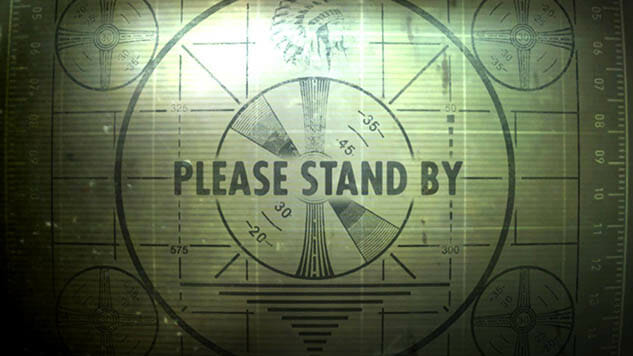
War. War never changes. But you know what has changed a lot over the years? The Fallout games. Since their official debut in 1997, the series has passed through many hands, changing in tone and format as it has shifted and evolved from a celebrated (but perhaps niche) PC game to a big budget shooter-RPG that is wildly popular on almost every console all over the world. We first ran this list right at the end of Fallout’s 20th anniversary year, which Bethesda celebrated by giving away the game that started it all. Fallout 76 came now long after, and now that it’s been out for several months, we’re ready to give it a spot on this list.
As we now celebrate and rank the core Fallout games, let us remember the many sidelined and ill-fated Fallout projects that time has almost forgotten: A Fallout game on PlayStation that never left pre-production. Van Buren, the Black Isle Studios’ version of Fallout 3 that was cancelled near completion. Fallout Tactics 2, the sequel to Tactics that never got past the concept stage. Project V13, aka the Fallout MMO, a game that was never meant to be. Fallout Extreme, another console Interplay title all but doomed to fail. Hidden in the vast legacy of failure are markers revealing what the trajectory of Fallout might have been if Bethesda hadn’t taken the reins from Interplay and ushered the series onto console. For better or worse, here are the games of Fallout, from worst to best.
9. Fallout: Brotherhood of Steel
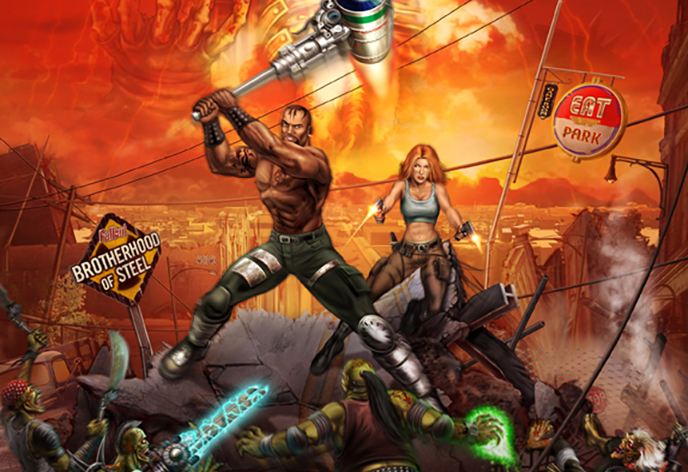
To begin, Fallout: Brotherhood of Steel is an Xbox game. From 2004. That should tell you most of what you need to know in terms of its quality, and its value to the Fallout series.
In many ways, it is a Fallout game in name only; in fact, Bethesda (and I’m sure others involved in Fallout’s creation over the years) do not even consider it canon. It is poorly written, the characters crude, the references to Fallout superficial and hamfisted at best (for example, The Chosen One is an unlockable NPC). The environment design is a joke, the viewpoint tortured and too close for comfort. And the graphics are unbearable to look at. Consider yourself lucky that you probably did not play Fallout: Brotherhood of Steel.
8. Fallout Tactics
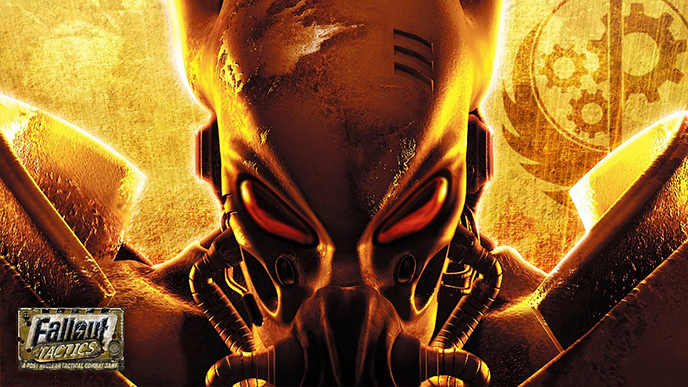
Not to be confused with Fallout: Brotherhood of Steel, Fallout Tactics is also known by its full title, Fallout Tactics: Brotherhood of Steel. You with me still? OK good. Tactics was a massive deviation from its predecessors Fallout 1 and 2, in that its combat focused more on a real time strategy format, a feature that would somewhat find its way back to the series once it was bought by Bethesda. While it does focus on perhaps the most famous faction in all of Fallout’s history, the Brotherhood of Steel, it’s a dull, rather charmless game that doesn’t share much in common with the others, and fails to improve the combat system it’s built on. It also bears the unique distinction of being one of the only Fallout games to ever have any multiplayer features, but even those aren’t particularly impressive; if you ask me, working vehicles just don’t belong in Fallout, unless you’re talking about Fallout 2. With so little relevance to what the Fallout games are now, it’s no surprise Tactics has all but fallen to the wayside outside of Steam sales and the occasional bundle.
7. Fallout 76
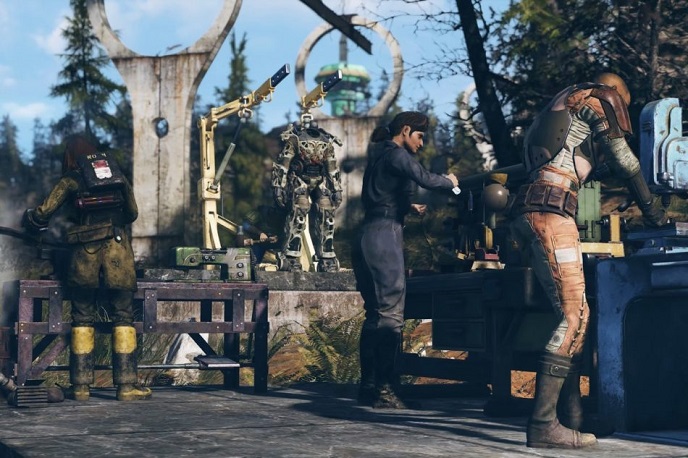
Fallout 76 was always going to be a tough sell. As an MMO set in West Virginia 25 years after the bombs fell, it was faced with finding a way to fit the series’ themes in an entirely new context while still retaining its core mechanics and tone. Whether or not it worked depends on who you talk to. The community has been vocal about the fixes they’d like to see in the game, but Bethesda has largely stuck to the original plan, adding community content, store items and minor adjustments and fixes but nothing that substantially improves the game. While hope remains that a future update could put things back on track, Fallout 76 is still largely based on many of the unfortunate precedents set by Fallout 4 (including a stripped down and even less enjoyable version of the workshop and settlement feature). Combined with Bethesda’s tone deafness, it leaves little hope that the series will find its way back in the years to come.
6. Fallout Shelter

It has been 954 days since Fallout Shelter was first announced, and I’m still just as mad about it now as I was back then. Prior to its release, Bethesda had been trying for years to come up with a Fallout mobile game, and they finally found their hit in Fallout Shelter, a vault management sim that makes heavy use of the game’s chirpy, 1950s faux educational film inspired cartoon aesthetic. Personally, I can’t stand it. While I love the look and how it’s used to illustrate the propaganda-like disparity between post-war domestic idealism and the stark realities of atomic war, Fallout Shelter takes that aesthetic and runs it into the ground. In doing so, it also trivializes many of the themes that make Fallout as a series so intriguing and mysterious. Sure, many games by their nature to some extent make light of their subject material by turning some aspect of their identity into a skill-based user-centric challenge. But Fallout Shelter is just silly fluff. And while I generally dislike criticizing how a studio distributes their resources and time, Fallout Shelter comes off as an insult in light of the game jams, skeleton crews, mod borrowing, and other corner-cutting measures used in the development of their current titles. In my opinion, Bethesda should spend a little less time chasing the success of Blizzard and making copycat, tailcoat-grabbing “themed” content, and more time fully investing into their core titles, lest they dilute their brands.
5. Fallout 4
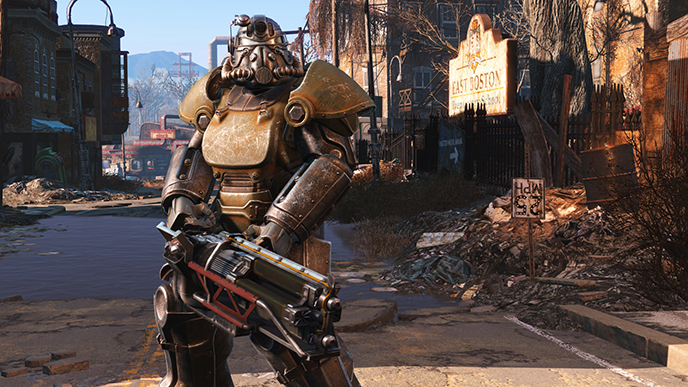
If you’re unfamiliar with my work, you may be wondering why the newest game in the Fallout series falls so far down the list. After all, it has better graphics, right? Newer is always better, right? Wrong. I have quite the list of grievances with Fallout 4, spreadoutoverseveralarticles, a few podcasts, and about half my Twitter feed, which I’ll summarize here as succinctly as I can. Fallout 4 is to Fallout as Skyrim was to The Elder Scrolls: enjoyable for those who have never played the series, but a disaster for those who appreciate rich storytelling and lore. Whereas earlier games were a masterpiece in negotiating the player’s curiosity and motivation to explore, Fallout 4 destroyed it, swapping out unique weapons for generic modifiers, removing the Skills system (which had previously broadened the available ways to progress through missions and strongly supported the more RPG like aspects of the series) and reducing the scale of the map dramatically. In exchange for the thinning of the game’s content and writing, Bethesda helpfully picked and chose from a buffet of popular mod content to pad it out, all but directly lifting Real Time Settler and depositing it into Fallout 4 as the settlement system, a feature that should have been DLC, if it had ever been introduced at all. And the eyeroll-worthy, poorly written ending managed to straddle four different fences at once while repeating the same mantra we’ve heard from so many other “Gee ain’t we smart” type game narratives: “Actually, they’re all bad, even the good guys.” How riveting. The writing of Fallout has always reflected a certain question of moral ambiguity, but the finale of Fallout 4 was just a cop-out, and lazy. Despite how much time I’ve sunk into it, it’s my least favorite of the major core Fallout games.
4. Fallout 3
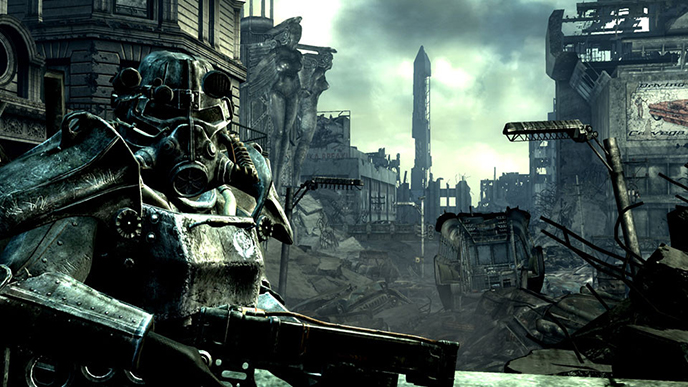
Fallout 3, as the first in the series directly and fully in the hands of Bethesda, upset a lot of fans upon its original release, and in doing so, touched on what personifies or defines a game’s identity to an audience and how that varies from person to person. For many, the switch from isometric to first/third person view was just too much; Fallout is a desert-set shithole and should only be seen the way the crow flies.
That being said, Fallout 3 was a bit breathtaking in that it gave us a chance suddenly to imagine what all our “2.5D-ish” adventures would look like in a fully 3D setting, truly illustrating the vast intricacy of such a complicated human ecosystem. And, after all those years of quietly obsessing over the nitty gritty details of the fantasy-historical events leading up to the Great War in the Fallout series, it was intriguing, almost intoxifying, to not just get some answers and get close to the action but actually visit the White House itself, to dig around in the papers and treasure troves of D.C. and crawl through its decaying subway system. You almost can’t ask for a better first impression, in terms of horror and impact, than the game’s sweeping views of our destroyed capital, the grandest and most sacred place in our country, annihilated by war and falling to ruin. Sure, Fallout 3 violated some of the original lore of the series, and bizarrely insisted on shoehorning in some ideas and features that should have been left to die (given some of its inconsistencies, I even suspect the game may have originally be conceived of, and even designed as, as a prequel). And let’s face it, the green tint was a bit nauseating. But the game did give Fallout, in its new East Coast setting, a fresh angle for the series to pursue, while reinforcing its themes of government corruption through the lens of scientific experimentation and the evils of the industrial military complex.
Fallout 3 was also the Fallout that ushered the series into a new era for a fresh audience to enjoy, while giving it the visuals it deserves. Interplay wasn’t exactly killing it when it came to bringing Fallout to console and they had some serious issues translating the scale and format (especially with their dwindling resources). Fallout needed the massive overhaul that came with Bethesda’s management. For that, Fallout 3 should still get some credit.
3. Fallout

I have a confession to make: I didn’t play the original Fallout games until after I’d played Fallout 3. Now, mind you, years ago when I implored my D.C.-dwelling best friend to indulge her curiosity in Fallout 3, I made her play through the first two games first because, while I’d made mistakes as a gamer, I couldn’t set her up for disparity and split between the two fandoms, as I’d been. Admittedly, going from 3D back to the isometric, overhead view of Fallout was difficult, even with my enduring fondness for similarly-styled games played in their heyday, like Diablo and Baldur’s Gate. And certain moments, like visiting Vault 15 to collect the water purification chip, seemed almost anti-climatic given the build-up and hoopla surrounding the first game’s events and their importance to the rest of the series, versus how they actually looked on-screen.
But that being said, this is the game that started it all. Well, almost—if we’re honest, Wasteland started it all. And the Mad Max films before that. But Fallout was where the magic first happened. It set the pace for everything that fans would come to love about the games, from its balance of combat, puzzles and storytelling, to its focus on decision making, player choice, and strategic character creation. In the years to come it all but put post-apocalyptia on the videogame map. As a medium, videogames owe a lot to the legacy of Fallout.
2. Fallout 2

At this point in Fallout’s life cycle, the series started to forge a solid identity of its own. It was here that the lore was starting to take some of its more fleshed out and intriguing turns (for example, revealing the purpose of the Vaults), while the writing in general was settling into its own voice, especially a sense of humor. It was less time sensitive than the original game, and even had its own method of fast travel if you completed the right side quest. The weapons were more diverse and complex, making the combat and strategy options better balanced, and improvements to the companion system, allowing them to engage in basic life saving tasks like wear armor, take commands, and use healing items, made it actually worth using. And the sprawl of the game, supported by the interdependent nature of the various settlement side quests, introduced an early open world-like structure that the series would later come to embrace. All in all, it did what a good sequel should do, which is build and refine the formula.
Fallout 2 was also when the much-disputed U.F.O. made its first appearance, an Easter egg that is now all but a mainstay of the series and has appeared in nearly every game since (even paving the way for Mothership Zeta, the oft-maligned DLC of Fallout 3 set aboard an alien spaceship). Whatever your thoughts on this shark-jumping moment in Fallout history, it did lay the groundwork for some of the most outrageous plotlines in the games to follow, especially when it comes to government secrets and intrigue, one of the stronger and more entertaining themes in the entire series.
1. Fallout: New Vegas
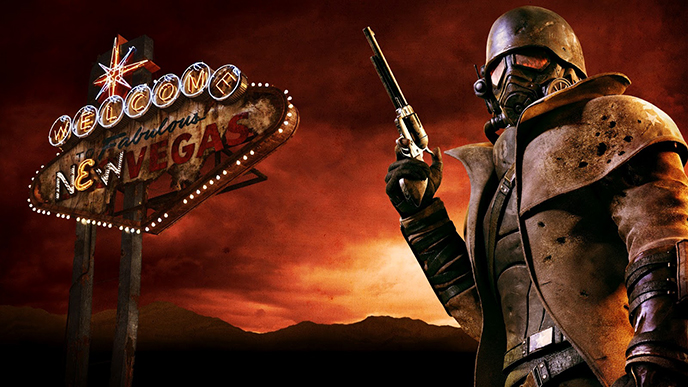
There’s not a day that goes by that I don’t weep about the breakdown in the professional relationship between Obsidian and Bethesda, and what it means for the future of Fallout. While the tension between Interplay Fallout fans and Bethesda Fallout fans will likely never be resolved (because, basically, you can’t take Fallout back to the isometric days AND make everybody like it), New Vegas was the closest we got to full resolution between the two distinct eras in Fallout history. It couldn’t restore how Fallout once looked, but it did a grand job at incorporating the lore—almost too good, really. Hidden in the many NPCs and histories of New Vegas were tidbits and details that melded the game to its true legacy, from The Chosen One’s companion’s granddaughter, Whiskey Rose, to the scraggly remains of old factions like The Followers of the Apocalypse, families like the Van Graffs, and familiar bands of Raiders, like the Vipers and the Khans. In location, it was even set extremely close to the series’ original settings of Mount Whitney and Bakersfield, so much so that I’m surprised that modders haven’t written more adventures revisiting the old stomping grounds out in southern California.
The writing of Fallout: New Vegas, for as vast and beautifully woven as it was, also gave me the sense that the writers weren’t saving their best for later. Every mission and NPC encounter seemed to be crafted with intent and purpose. For the hundreds upon thousands of interactions and dialogues and pivotal, interlocking decisions, the quality never faltered, and since the game’s debut in 2010, I’ve yet to see such a masterful set-up and execution for post-release content.
Another thing I cherish about Fallout: New Vegas is that it gave us a lot of priceless Fallout lore that might have otherwise been lost or bungled. Some of the content in New Vegas was actually reshaped from The Van Buren Project, a Fallout title in development by Black Isle Studios under Interplay in 2003 and designed by two of the series’s most iconic writers, Chris Avellone and Josh Sawyer. The game was close to completion when it was canceled by the publisher, and many studio members from Black Isle (including Avellone and Sawyer) later ended up at Obsidian, who began development on New Vegas in 2008, well after Bethesda bought the rights to the series in 2004. As a result, details that may have otherwise been lost in a dead release still came to light in New Vegas, from factions to key plot points, characters and locations, like the dispute over the Hoover Dam, the rise of Caesar’s Legion, and the story of Joshua Graham. The Big MT from Old World Blues (my personal favorite location in the entire series) was also a Van Buren invention.
In that sense, Fallout: New Vegas didn’t just meld two eras of Fallout at odds with each other: it also preserved its past. It was our best chance at ever reconciling the divide. For that, I am comfortable placing it at the top of the list and naming it the best Fallout game of the series.
Holly Green is the assistant editor of Paste Games and a reporter and semiprofessional photographer. She is also the author of Fry Scores: An Unofficial Guide To Video Game Grub. You can find her work at Gamasutra, Polygon, Unwinnable, and other videogame news publications.